HONEYBEE VERTICAL GARDEN PODS
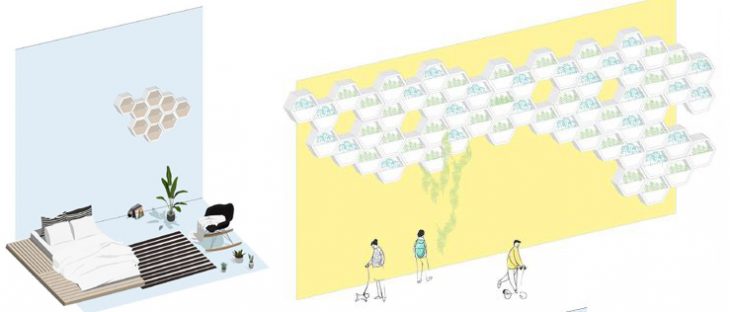
When thinking about vertical gardens, expensive and landscaping complex works come up to our minds. Vertical gardens have the potential of being both, outside and inside, in small or big spaces, keeping a simple format.
In the case of the HoneyBee pods, the idea was to generate a easily mounted system that could be produced in a FabLab, along with the idea that these spaces will some day be available to a greater amount of people, in a more Universal way.
Using a rerpetitive modulated system consisting on wooden hexagonal pods, each user can decide on how big is his particular vertical garden going to be, as well as the depth and finishing their pods will have. Additionally, the system can work both leaned into a wall or separated, leaving a buffer zone that can act as a heat dissipator in a facade or special protected space.
DESIGN PROCESS
Through an iterative process, the design of the pods varied repeatedly through time, taking into consideration in the fabrication and mounting process two main aspects: Practicity and Waste saving. Additionally, the main idea was to use as less glue as possible, as well as no metal pieces at all.

DESIGN & FABRICATION
The base module is composed by two main variations of an hexagon, which are then attached to a main structural wooden support that goes through them. The 2 variations change the core structural pieces in order to establish 2 different locations of the transversal structural bars, central or side positions.
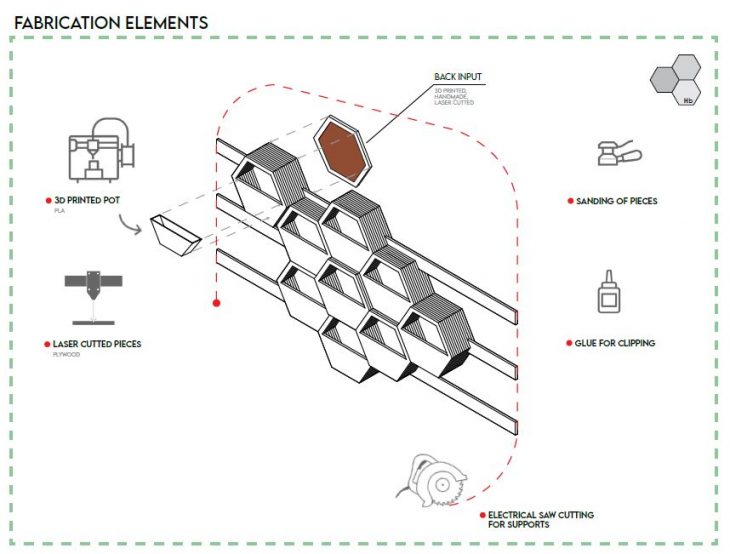 Each pod is made out of 5mm laser-cutted layers of plywood or wood sheets, that attached altogether by glued “clips”, generate the final shape. In addition, a PLA 3D printed pot is inserted inside, and helps to retain the proper humidity for the plants while protecting the wood of the pod.
Each pod is made out of 5mm laser-cutted layers of plywood or wood sheets, that attached altogether by glued “clips”, generate the final shape. In addition, a PLA 3D printed pot is inserted inside, and helps to retain the proper humidity for the plants while protecting the wood of the pod.
The support system is composed by simple wooden planks attached to laser-cutted side stands. The user can vary the kind of stand depending on the kind of use he or she wants to give to his or her particular vertical garden.
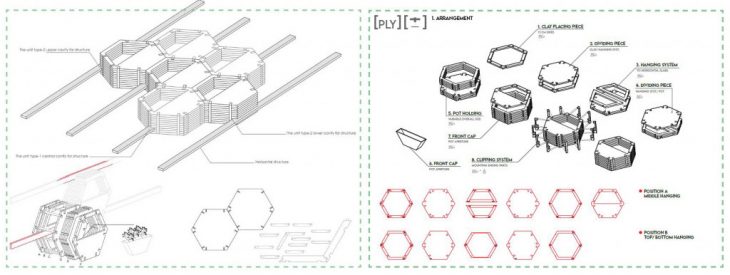
Even though the machines used are usually available exclusively in fab labs or similar academic environments, the additional tools needed are simple and do not require any particular experience in crafting or so. With the cutting and 3d printing of the pieces, the system can be easily arranged by users with a wide variety of ages and previous experience.
Being the system designed in an open source basis, the aim is for the potential user to download the files for 3D printing and laser cutting on their own or by a fablab manager in charge, with the additional possibility of customizing them for their personal interests.
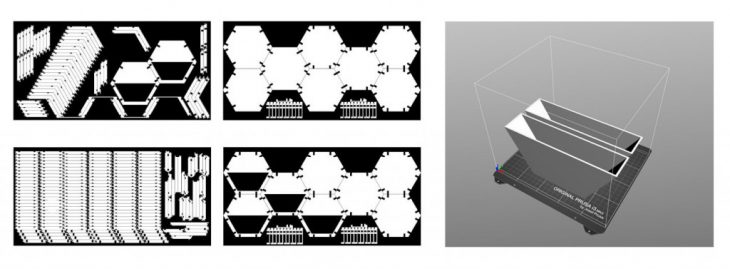 In order to achieve a real sense of the total impact the design and further production has, a traceability diagram was generated. The main idea was to differentiate in an organized way the overall process involved in the fabrication of the prototype.
In order to achieve a real sense of the total impact the design and further production has, a traceability diagram was generated. The main idea was to differentiate in an organized way the overall process involved in the fabrication of the prototype.
In this way, as special considerations for the pods, apart from the energy consumption and energy loss in heat state, the separation between external and students labour was made. By doing this, a better frame of understanding is generated, as it allows for the reader to understand in which cases the transportation of the worker is needed, the amount of time the subject remains and which are his or her needs, among other things.
VALLDAURA’S AREA
Additionally, 3 territorial definitions where made. Starting from the medium outside Valldaura, we then change into Can Valldaura’s land, focusing then specifically on the Valldaura labs.
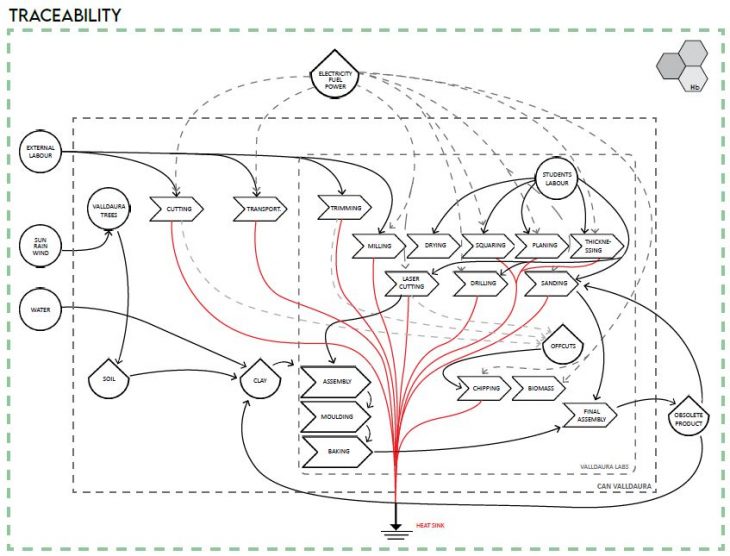
Considering the obsolete product as a potential to reduce the impact of the prototype generation, we can observe that the scrap materials serve as a way of reducing the amount of new ones, contributing possitively to the overall impact.
HONEYBEE VERTICAL GARDEN PODS is a project of IAAC, Institute for Advanced Architecture of Catalonia developed in the Masters of Advanced Ecological Buildings and Biocities 2019/20 by Students: Sena Kocaoglu and Juan Secondo, and Faculty: Michael Salka.